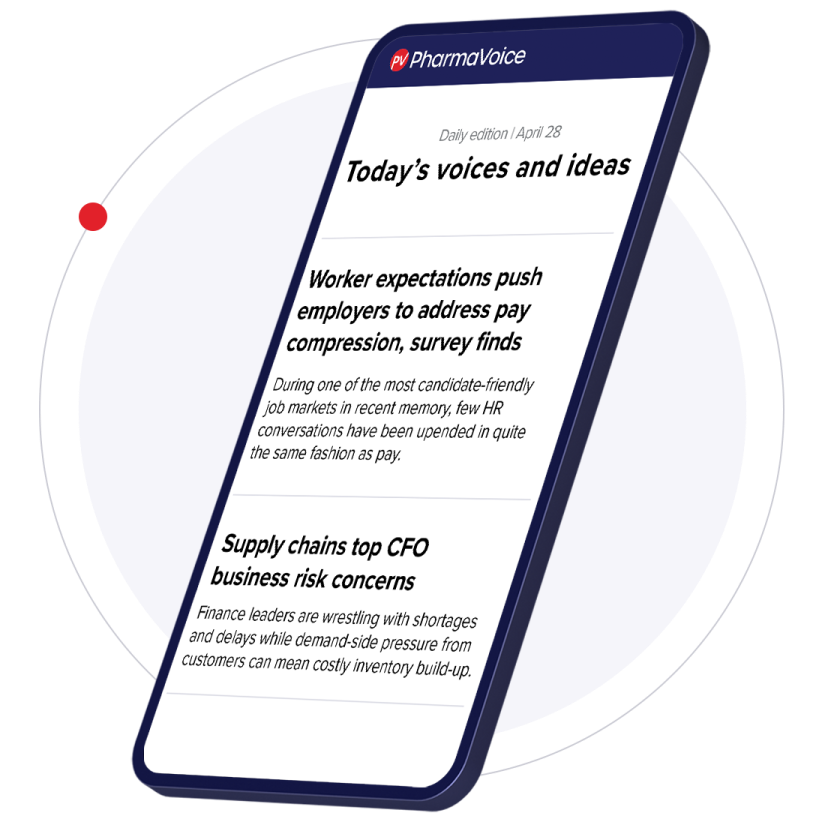BY KIM RIBBINK
With a practical approach to research and discovery, Dr. George Scangos has led Exelixis from a genomic research firm to a drug discovery and development company with expertise in oncology and metabolism. Research, by necessity, can often be an esoteric pursuit. But for George Scangos, Ph.D., the desire to base that research in practical output has led him to uncover pathways to counteract disease. Along the way, he has taken some routes once thought of as controversial, but today regarded as standard practice in the industry. Dr. Scangos left academia early in his career to join the small start-up company Molecular Therapeutics Inc. “The idea of working in an environment with smart people doing interesting science with the goal of improving patient care grabbed my attention," he says. “It’s this approach to science that prompted me to leave the university." In the mid-1990s, while he was at Bayer, it became clear that advances in genetics and genomic sequencing would lead to whole new ways to approach biology. Early on, Dr. Scangos recognized that to derive disease modification outcomes and thereby improve healthcare, it made sense to take what he refers to as “a functional approach to genetic research." Dr. Scangos says at the time, in the mid-1990s, a number of genomics companies — Millennium, Incyte, and Celera, for example — were using genomic approaches to correlate gene expression with disease states. “The problem with that approach was that the correlation didn’t identify what direction the cause and effect took," Dr. Scangos says. “It was hard to distinguish whether the overexpression of a gene caused a disease or if the gene overexpressed because it was in a diseased cell and therefore behaved differently." Dr. Scangos and his colleagues at Exelixis were interested in finding a single gene whose activity could be modulated and whose function could be changed to counteract the disease. “Gene function is more interesting for me than gene sequences," he says. “Our goal was to uncover the cause and effect and find genes in which a change in activity could counteract a disease state." At the time Dr. Scangos’ approach was considered controversial, but he and his team members have since been vindicated; the functional approach is becoming widespread throughout the industry. “Although there were many academics doing this type of work, we were one of the very first corporate entities to develop the appropriate technologies and tools," Dr. Scangos says. Old Foe, New Passion Dr. Scangos’ career achievements have evolved from an interest in biology, yet early on it was the one field he did not want to pursue. “When I took biology in high school I hated it, and when I went to college I had no idea what I wanted to major in, but the one thing I was sure of was it would not be biology," he says. But he needed to fulfill the science requirements for his degree, and he was persuaded by friends to take biology rather than physics. “The class was taught by William Keaton, who had written the textbook in use at the time," Dr. Scangos says. “While I was a reluctant biology student, the course was fantastic. I later took a course in genetics and some courses in neurobiology. It was Professor Keaton and that introductory biology course at Cornell that got me interested in this field." Academic life lay ahead, but while on the faculty at The Johns Hopkins University, Dr. Scangos received an opportunity to consult for two startup companies — Molecular Therapeutics and Molecular Diagnostics — which developed into a full-time opportunity. “Making the jump from university to industry at that time was a big deal; I took a sabbatical from the university for a year, kept my university lab going, and went to work in the company," he recalls. The rest, as they say, is history, and Dr. Scangos has remained in industry ever since. While at Molecular Therapeutics, Bayer acquired the company as well as Molecular Diagnostics, and Dr. Scangos hence went to work for Bayer in the same capacity. His 10 years with the large pharma company gave him insights into the drug-discovery and drug-development process. But it also awakened his passion for the entrepreneurial and teamwork spirit that exists in small biotech companies. Dr. Scangos was involved with a Bayer unit that was focused on recombinant protein drugs. The division, then called Bayer Biotechnology, had in-licensed Factor 8 from Genentech. With the goal of developing recombinant protein drugs, Bayer had made a significant investment in conducting process and clinical development, scale up, and manufacturing. He headed up that unit for some years and ultimately Factor 8 made it to market. There were other compounds in the Bayer pipeline as well, but this experience helped Dr. Scangos recognize where his real interests lay. Gene Awakening While he was working with protein drugs, the genomics/genetics explosion happened, and Dr. Scangos says the discoveries coming from this area of science were compelling and exciting for him. “This was the start of being able to use sequence information and carry out biological experiments in different ways, and I believed that the next decade would be driven by advances in biology," he says. “The sequencing of the genome has made possible incredible new understandings of how cells and organisms work and the role of RNA, RNAi, and micro RNAs in gene regulation." With the greatest respect for the pharmaceutical industry, Dr. Scangos says he believed that the biggest advances would come out of academia and could be best adapted in a biotech company rather than a large pharma company. With this in mind, he decided to join Exelixis, which at the time was doing genetic research in fruit flies. “Exelixis was taking a very productive approach to understanding the genes that cause disease and the genes whose modulation might be useful in treating disease," he says. To put it in context, Dr. Scangos explains that since drugs modulate the activity of proteins, the consequences of this can be modeled to a large extent by modulating the expression of the gene that encodes that protein. “The idea behind Exelixis was to recreate a disease state and then use genetics to modulate the expression of every gene, one by one," he explains. “The genes whose modulation were found to counteract the disease state could then become good drug targets. In practice, however, these experiments can’t be done in complicated systems; they only work in simple systems such as fruit flies or C. elegans, little nematode worms. And even then, it’s a challenge to knock out every gene, one by one. For some years, we were, essentially, a very large genetics department." The challenge became finding a way to create a successful business model for the company. While the thinking at the time was that such companies should focus on the biology and sell their output to pharma companies, Dr. Scangos and his team quickly realized that the potential to make profits under such a model was negligible. “In 1999, we began to build up the company’s capabilities to develop drugs and to focus on small molecules," he says. The initial focus was on kinases, with a therapeutic focus on oncology, although Exelixis has since expanded into many other classes. The Exelixis board bought into the business model and sanctioned the hiring of about 100 people to work in the discovery area. He says this was a bold move, pointing out that the step-by-step hiring approach most biotech companies take hinders the ability to hire the best people. “We made a commitment to this approach," he says. “We hired people who had extensive experience in drug discovery; we all had ideas about how the process and approach could be improved." Some of those approaches were, at the time, considered risky, he says. “The thinking at the time was that if a company had a few hundred thousand compounds and the right computer algorithms so that those compounds were structurally distributed over chemical space, that was enough," he says. “But from my experience, and that of others at Exelixis, very minor changes, sometimes in the structure, can make major changes in the behavior of a molecule, changes that could not be predicted by computer algorithms." Dr. Scangos’ intuition led Exelixis to build a very large chemical library; the company now has more than 4.5 million compounds, making it one of the largest, if not the largest, libraries around. “This decision has shown its value over the years by the number and the quality of the hits and the lead compounds that we’ve been able to pull out of the library," he says. While Exelixis has many demonstrated strengths and is well-placed right now with several key alliances, including ones with GlaxoSmithKline and Bristol Myers-Squibb, Dr. Scangos is deeply concerned about the future of the broader biotech industry. “With public companies in trouble, venture capitalists aren’t finding investing in startup companies attractive because they don’t see a way to get their money back," he says. “I think we are in danger of losing a generation or two of biotech companies, and the biotech industry as it’s existed for the past 20 years may not exist in the future." Added to those concerns is downward pressure on drug prices. “There’s a lot of talk about healthcare reform, and we need healthcare reform," he says. “But the reason people take the risk to invest in companies like ours is that if we are successful it pays big time; it’s high risk, high reward. If the high risk yields a low reward because of pressure on drug prices, investment becomes that much less attractive. “As the Obama administration goes through the process of thinking about what to do about healthcare, and it certainly needs to do something, I’m hoping it addresses the consequences of its actions on the biotech industry," he says. Leading by Example As CEO of a company in a research-based industry, Dr. Scangos says while having a scientific background is not necessary, it does help. And, along the way, he’s picked up the other requisite skills, including financial know-how, regulatory understanding, and, most importantly, management of staff. “I’ve joked that the two chief skills a CEO needs are stress tolerance and the ability to multitask," he says. “That’s a glib statement, but it has some truth to it. Any company in this industry, especially in a downward economic environment, faces multiple issues. Leaders have to remain cool and thoughtful, be able to motivate people, and create an environment where really good people want to come to work." There is a tendency, he says, for leaders to overmanage, which is especially true in larger companies where the dollars get bigger. “To me, the goal is to hire the really best people, give them the resources, let them go to work, and pay enough attention so if they’re not doing their job you know it," he says. Of chief importance in the life-sciences industry is a willingness to encourage innovation and allow and encourage people to think freely. “Innovation is risky and failure is inevitable, so I won’t punish people for failing," he says. “But it’s important to distinguish between a good idea that was well-executed that didn’t work versus an idea that failed because it was intrinsically bad or poorly executed. The moral is that people can be really successful even if they have messed up. If a leader just rewards success and punishes failure, he or she could have a problem." Beyond his leadership at Exelixis, Dr. Scangos sets a powerful example across the industry through his activity with the TB Alliance’s board of directors. “I spend most of my day thinking about cancer," he says. “But thinking about cancer is a luxury, if one is going die at 22 because of HIV or TB. There are billions of people around the world who are in dire need of better treatment for a variety of diseases. I find it very compelling spending time trying to make drugs that will make lives better for those millions of patients." Dr. Scangos is also involved with a biotech industry-sponsored organization called BVGH — Bio Ventures for Global Health. “This organization attempts to generate resources from within biotech companies to focus on neglected diseases of the Third World; I think it’s important to contribute to those where we can," he says.F PharmaVOICE welcomes comments about this article. E-mail us at [email protected]. The idea behind Exelixis was to recreate a disease state and then use genetics to modulate the expression of every gene, one by one. Innovation is risky and failure is inevitable, so I won’t punish people for failing. practical biology george a. scangos, ph.d. — RESUME 1996 — Present. President and CEO, Exelixis 1989 — 1996. President, Bayer Biotechnology 1986 — 1989. VP of Research, Molecular Therapeutics Inc. 1987 — Present. Adjunct Professor, Faculty, Department of Biology, The Johns Hopkins University 1980 — 1987. Full-time Faculty, Department of Biology, The Johns Hopkins University 1977 — 1980. Postdoctoral Fellow, Laboratory of Frank Ruddle, Yale University Academic background 1977. Ph.D., Microbiology, University of Massachusetts 1970. B.A., Biology, Cornell Board Memberships 2006 Board of Directors, TB Alliance 2003 Board of Directors, Anadys 1997 Board of Directors, Entelos 1996 Board of Directors, Exelixis Biology in progress Since its inception in 1996, Exelixis has come a very long way and built a large and deep pipeline. “We have 14 compounds in clinical development and have been filing three or more INDs a year for several years in a row," says George Scangos, Ph.D., president and CEO of Exelixis. The years of research have helped the company better understand the genes, proteins, and biochemical pathways that are implicated in various types of cancer, and the company is using this knowledge as the foundation for its drug discovery and development strategy. The company is pursuing three distinct strategies for the identification and development of its anticancer compounds. The first is to target multiple cancer-associated receptor tyrosine kinases (RTKs) simultaneously, the second is to target downstream signaling cascades, and the third is to pursue investigations of how combinations of these targeted compounds might work together to the benefit of patients. (See box on next page for more information.) The company is also focused on using its understanding of target biology and compound activity to identify those patients most likely to benefit from a particular drug candidate. Dr. Scangos says these new opportunities have demonstrated the growing importance of developing diagnostics in tandem with therapeutics. “In oncology, as more is understood about the genetics of tumors, we will be able to differentiate tumors among different patients and understand what’s driving the proliferation of those tumor types; then it becomes possible to tailor the therapy appropriately for that patient," he says. He cites Novartis’ Gleevec for chronic myeloid leukemia (CML) and Genentech’s Herceptin as examples of this type of research. Increasingly, it’s becoming clear that a number of targeted therapeutics work in a subset of tumors but not in all. “The more we understand, the more it becomes an imperative to have sophisticated diagnostics to be able to appropriately treat a given patient," Dr. Scangos says. This has become a growing focus at Exelixis, where most of the company’s clinical trials seek to gather as much sequencing information as possible to not only determine what’s happening with the target of the drug, but also what’s happening with some of the other key pathways that are known to be involved in abnormal growth of tumor cells. “This approach provides our company with an assessment early on as to what types of patients our d ugs seem to have activity in and where they don’t, which helps us to more thoughtfully design later-stage clinical trials," he says. Patient-specific treatments vary according to tumor type, he says. “With our XL184 product, we have robust data that in patients with medullary thyroid cancer that drug seems to benefit the vast majority of patients," he says. “In other cancers, for example lung cancer, the benefits of XL184 may be greater for some patients than others." Dr. Scangos is proud of what he and his colleagues have achieved at Exelixis. “We have built what is arguably one of the best discovery groups in the industry," he says. “I don’t know another organization that’s as good at moving from target through Phase I clinical development. In addition, we have some drugs moving through the clinic now that appear to have potential utility for the treatment of a number of different types of tumors. We have to prove these assumptions, of course, in later-stage clinical development, and we’re awaiting the outcome of these trials, but from the data we have so far the drugs look promising." F targeting multiple rtks SIMULTANEOUSLY Exelixis’ most advanced clinical development candidates are designed to simultaneously target multiple receptor tyrosine kinases (RTKs), including VEGFR2, MET, and RET. These proteins are involved in key cancer-related processes, and RTK inhibition has been validated as a therapeutic approach to treating cancer by the approval of numerous drugs designed to target individual RTKs. ince its inception in 1996, Exelixis has come a very long way and built a large and deep pipeline. “We have 14 compounds in clinical development and have been filing three or more INDs a year for several years in a row," says George Scangos, Ph.D., president and CEO of Exelixis. The years of research have helped the company better understand the genes, proteins, and biochemical pathways that are implicated in various types of cancer, and the company is using this knowledge as the foundation for its drug discovery and development strategy. The company is pursuing three distinct strategies for the identification and development of its anticancer compounds. The first is to target multiple cancer-associated receptor tyrosine kinases (RTKs) simultaneously, the second is to target downstream signaling cascades, and the third is to pursue investigations of how combinations of these targeted compounds might work together to the benefit of patients. (See box on next page for more information.) The company is also focused on using its understanding of target biology and compound activity to identify those patients most likely to benefit from a particular drug candidate. Dr. Scangos says these new opportunities have demonstrated the growing importance of developing diagnostics in tandem with therapeutics. “In oncology, as more is understood about the genetics of tumors, we will be able to differentiate tumors among different patients and understand what’s driving the proliferation of those tumor types; then it becomes possible to tailor the therapy appropriately for that patient," he says. He cites Novartis’ Gleevec for chronic myeloid leukemia (CML) and Genentech’s Herceptin as examples of this type of research. Increasingly, it’s becoming clear that a number of targeted therapeutics work in a subset of tumors but not in all. “The more we understand, the more it becomes an imperative to have sophisticated diagnostics to be able to appropriately treat a given patient," Dr. Scangos says. This has become a growing focus at Exelixis, where most of the company’s clinical trials seek to gather as much sequencing information as possible to not only determine what’s happening with the target of the drug, but also what’s happening with some of the other key pathways that are known to be involved in abnormal growth of tumor cells. “This approach provides our company with an assessment early on as to what types of patients our drugs seem to have activity in and where they don’t, which helps us to more thoughtfully design later-stage clinical trials," he says. Patient-specific treatments vary according to tumor type, he says. “With our XL184 product, we have robust data that in patients with medullary thyroid cancer that drug seems to benefit the vast majority of patients," he says. “In other cancers, for example lung cancer, the benefits of XL184 may be greater for some patients than others." Dr. Scangos is proud of what he and his colleagues have achieved at Exelixis. “We have built what is arguably one of the best discovery groups in the industry," he says. “I don’t know another organization that’s as good at moving from target through Phase I clinical development. In addition, we have some drugs moving through the clinic now that appear to have potential utility for the treatment of a number of different types of tumors. We have to prove these assumptions, of course, in later-stage clinical development, and we’re awaiting the outcome of these trials, but from the data we have so far the drugs look promising." F The company’s executives believe this multitargeted approach may provide a way to inhibit numerous cancer processes in a highly concerted manner with a single drug. In turn, this may achieve a clinically meaningful balance between the broad effects of chemotherapy and the favorable safety and tolerability profiles of targeted agents. The RTK inhibitors currently in development include XL880 (MET, VEGFR2) and XL184 (MET, VEGFR2, RET). Targeting Downstream Signaling Cascades The second approach is to target critical downstream signaling cascades that are essential for transforming normal cells into malignant disease. These signaling pathways, such as the PTEN/PI3K, RAS/RAF/MEK/ERK, and JAK/STAT pathways, regulate growth and survival, and are mutationally activated in many cancers. Individual kinases within these pathways are points of convergence for multiple signaling cascades. Thus, inhibiting one of these downstream kinases could effectively shut down signaling from a number of different upstream pathways. The company has made progress in developing a portfolio of compounds that inhibit critical components of these downstream signaling pathways with high specificity and activity. These compounds include: XL147 (PI3K), XL765 (PI3K and mTOR), XL518 (MEK), XL228 (IGF1R, BCR-ABL, SRC), XL281 (RAF), and XL019 (JAK2). A Combination Approach The third approach is to pursue strategies for combining these targeted agents to provide potential patient benefit in various cancer types. A substantial body of data shows that cancers are heterogeneous in nature and can adapt to the inhibition of one signaling pathway by activating another one. Therefore, combining selective targeted therapies to inhibit multiple cancer-promoting pathways is a high priority in the development paths of these agents. PharmaVOICE 100 Who Has Inspired You? The fifth annual PharmaVOICE 100 will be determined by the collective participation of you, our readers. This is your opportunity to recognize the people who inspire you and others; who are having the greatest influence on corporate leadership, research and development, technology, creativity, marketing, strategy, and more; and who are impacting the life-sciences industry through their actions. These individuals should view industry trends as challenges not burdens, as opportunities not obstacles. They should embody panache and conviction. They should be leaders who plan for the future rather than respond to change. They should be innovative, creators of outside the box and breakthrough strategies, products, and services. They should be pioneering new paths and lifting their companies to new heights. The deadline for submissions is May 1, 2009. To submit your nomination, please visit pharmavoice.com/100.










